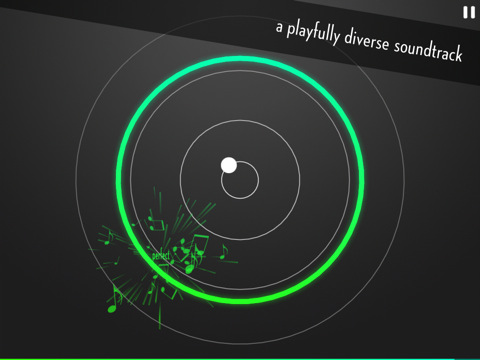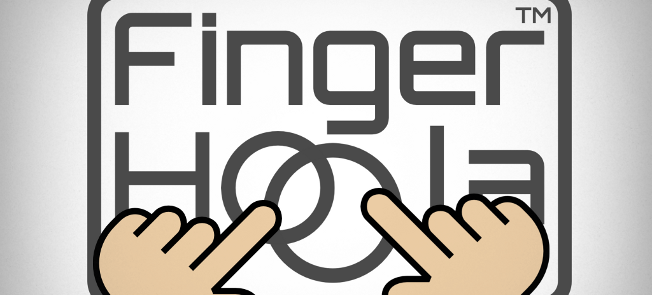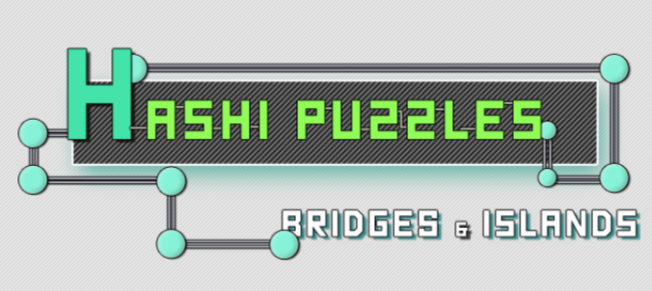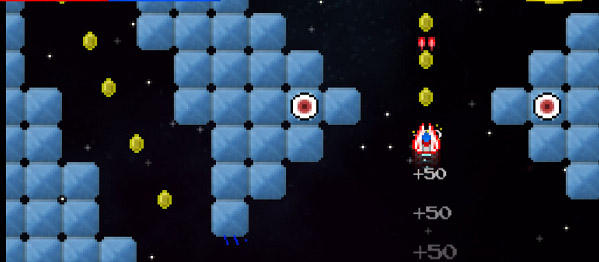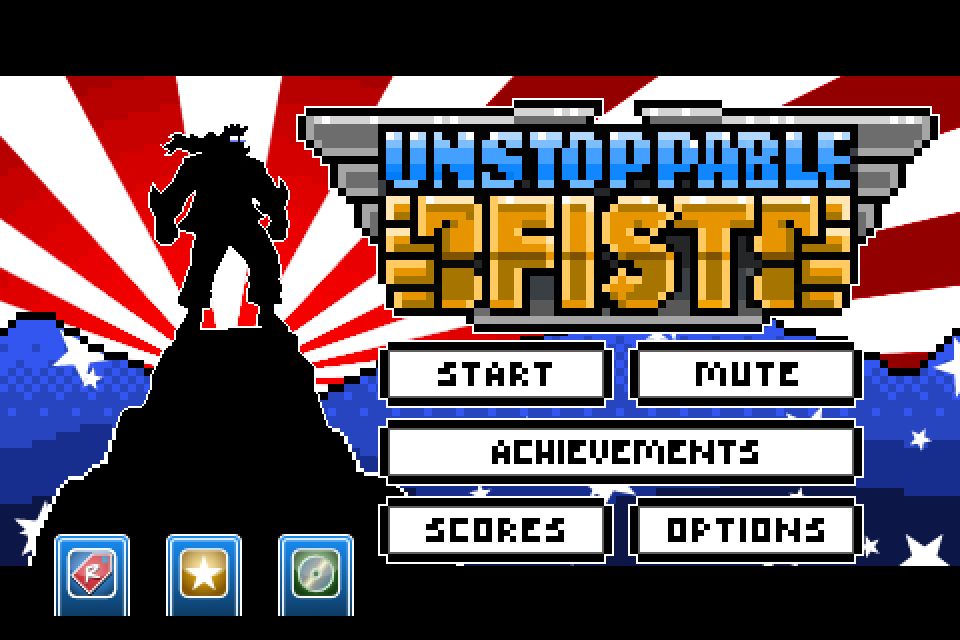By and large I’ve skipped a good portion of the music game genre in my lifetime. Although I’ve spent countless hours playing the Guitar Hero and Rock Band franchises, I’ve never managed to find the time or the resources to play games like Rez and Child of Eden that have a greater focus on blending the visuals with the sound. That all ends with Pulse: Volume 1 from Cipher Prime Studios. It was by a lucky chance that I saw a news post that the game was on sale for $1.99 in the Apple store and almost immediately I was glad I made the plunge.
The mechanics of this rhythm game are simple. You have a series of concentric circles on the screen. A pulse radiates outward from the center of the circles. While music plays in the background, dots will randomly appear on or within the circles, and just as the pulse reaches these dots, you must tap the dots in time. Doing so successfully will result in the music playing correctly, and themed effects will emanate from the dots. Repeatedly failing to hit the notes will take all of the color and effects away from the play area. It doesn’t seem like you can fail, but obviously your experience will be more enjoyable when you’re succeeding and the game’s rewarding you with a visual and aural extravaganza.
Each stage is a single song with an associated visual effect for when you hit a note successfully. The music ranges all over the place from classical piano to rap to techno. I found that long after I stopped playing, I’d still have one or two songs stuck in my head. One of the great features of the game is the fact that updates are free and often include new songs. A recent update included four additional songs from bands in the Philadelphia area.
If there’s one complaint I have about the game it’s that the difficulty in the songs ramps up immediately. The tutorial stage itself doesn’t even indicate what you’re supposed to do. I guess there’s something novel to be said for self-discovery, but I was just a little put off at first. The first song or two shouldn’t give anyone too much trouble, but after that the pressure’s really on. You’ll start having to hit notes that aren’t directly on the beat. Often times there are multiple notes between beats and not always near one another.
Eventually you’ll also start having to hit multiple notes at the same time which means this is a two-handed game. Even though this game is on the iPad and there’s a lot of screen real estate to work with, I often found that one or both of my hands were obscuring my vision of the entire playfield. Inevitably notes would appear in places where I could not see them and would result in a miss. Often, when I’d barely miss a note, I found myself playing catch-up as I was consistently a half-second behind the beat and couldn’t force my brain to get back in synch. I’m sure with some practice, these are issues I can work around. As with any other rhythm game, you’re not supposed to be flawless on the first run. The mechanics may or may not improve with time. Perhaps with practice there’s a better way to hold your hands near the screen so that it doesn’t obscure your vision.
Despite the problems, the game has been a pure joy. It’s always difficult to review a game like this where your playtime is more about an experience rather than a sum of individual parts or features. Do yourself a favor and go try this game. If you can get past the initial learning curve, I think you’ll find a music game that hits all the right notes.
© 2011 – 2013, The Indie Mine. All rights reserved.


